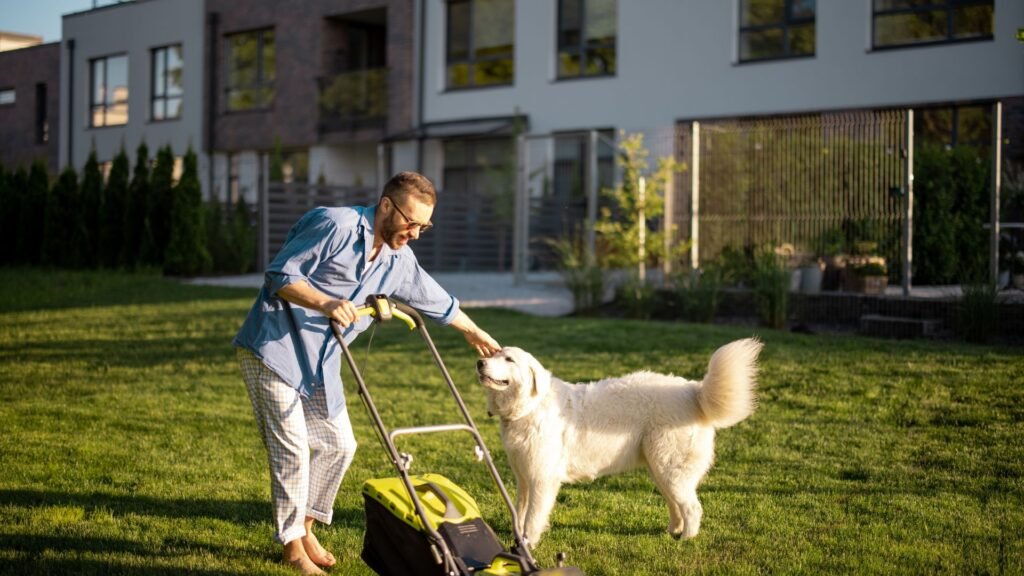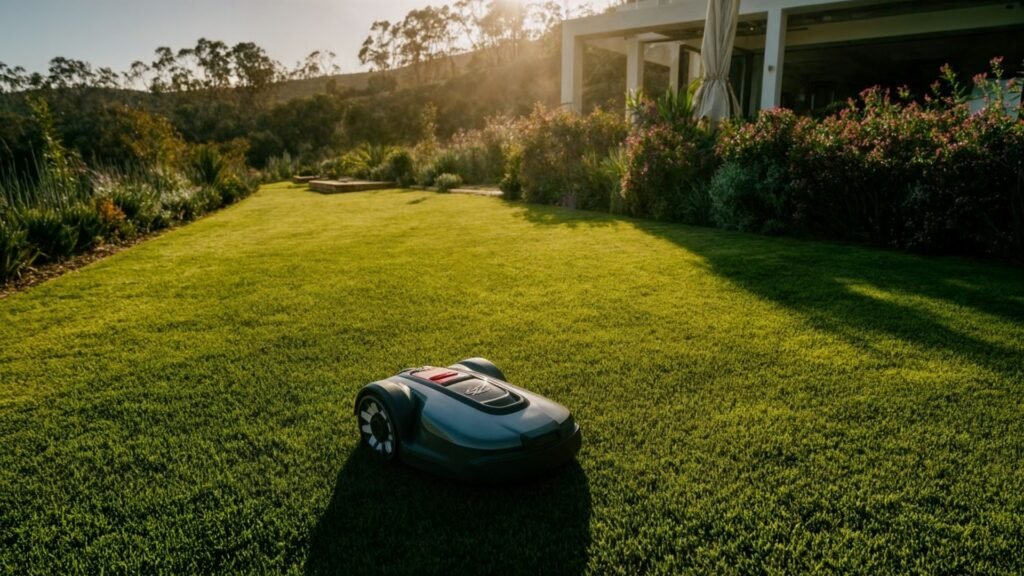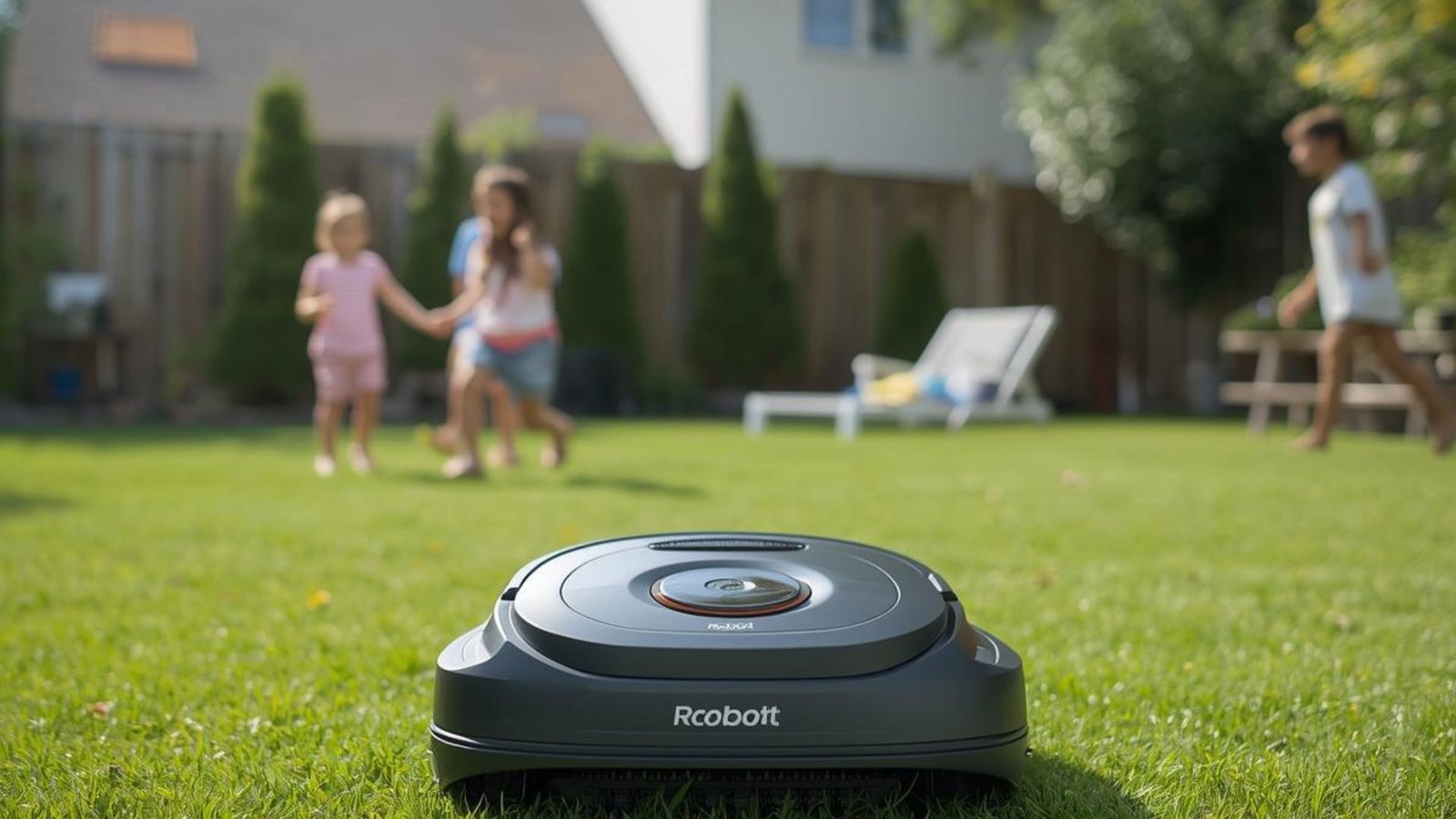Are robotic lawn mowers a good fit for busy parents who need a well-kept yard without the stress? This question hit home for me as I tried to balance yard work with family time. A robot mower can save up to 50% in costs compared to traditional mowers over 5 years, but my main goal was to ensure safety.
My research showed that these devices come with safety features built specifically to work around children and pets. You’ll find lift and tilt sensors in most models that stop the blades in under 2 seconds if someone picks up or tips the mower. Advanced models like Yarbo can handle yards of all sizes – up to 6 acres and slopes up to 35° while meeting strict safety standards.
In this piece, we’ll tackle the safety concerns most parents have about robotic lawn mowers. You’ll learn about their built-in safety features and get practical tips to set up these devices that maximize both safety and performance. This guide will help you decide if the best robotic lawn mower makes sense for your family, whether you’re weighing the investment or have specific safety questions.
What Makes Robotic Lawn Mowers Safe for Families
“The fact that robotic mowers eliminate human interaction by mows by itself without the presence of the operator, this will make it the safest way to mow.” — Keven Moore, Risk management expert and columnist
Parents who consider robotic lawn mowers place safety at the top of their list. These modern machines come with multiple safety systems that protect children and pets, making them perfect for busy families.
Built-in safety sensors and auto-stop features
The core of robotic lawn mower safety comes from advanced sensor arrays. These machines pack several key safety features:
- Lift sensors stop the blades right away when someone picks up or tilts the mower, which prevents injuries if children try to lift it
- Tilt sensors watch the mower’s angle and stop the blades if it runs on too steep slopes or might tip over
- Bumper sensors wrap around the mower’s entire body to give 360° protection, acting as the first defense against obstacles
These safety elements work as a team to shut down the mower in risky situations. The blades stop within milliseconds if your child lifts the mower. The machines also use small, lightweight pivoting blades placed away from the edges to reduce injury risks even more.
Obstacle detection and child-safe design
Advanced robotic mowers go beyond simple sensors by using vision systems that work like the machine’s eyes. These systems combine cameras and AI to:
- Spot and sort obstacles—including children, pets, and toys
- Tell the difference between areas safe to mow and ones to skip
- Predict moving objects’ paths and change course before problems occur
Some advanced models can spot over 150 different types of obstacles up to 5 meters away and keep a 1-meter safety zone. The system spots children quickly and changes its path to avoid any contact.
How modern models prevent accidents
Today’s robotic lawn mowers add extra safety measures for complete protection:
Every responsible model has an emergency stop button that lets anyone shut down the mower instantly. This feature proves valuable in homes with curious kids.
These mowers run quietly at just 54-58 dB(A)—softer than people talking. The low noise helps children stay aware of the mower without being startled by it.
The newest mowers can set up virtual boundaries through your phone, letting you block off children’s play areas. You’ll feel better knowing the robot won’t enter spaces where kids play.
Premium models use LiDAR technology for complete 360-degree visibility. They can spot anything basketball-sized or larger and stop automatically when approached.
7 Common Safety Concerns Parents Have (and the Truth)

“If anyone (human or animal) comes within 5m (15ft) of Nomad when operating, it immediately shuts down the mowing deck, alerts all monitoring users, and stops all movement.” — Vickery, Robotics expert, Nomad Mowers
Parents worry about robotic lawn mowers despite their safety features. Let’s get into the most common concerns and what research shows.
1. Will it hurt my child or pet?
Today’s robotic mowers use advanced sensors to detect and avoid pets and children. High-end models like Segway Navimow can spot 13 common animal species and stay at least 1 meter away. But no technology works perfectly—many rehabilitation centers report more hedgehog injuries from robotic mowers. You should watch children around working mowers. These devices help, but don’t replace adult supervision.
2. Can it run over toys or objects?
Robotic mowers detect obstacles with sensors. They softly bump into objects, change direction, and keep mowing without causing damage. Some advanced models use object avoidance systems to direct themselves around obstacles. Keep in mind that manufacturers don’t classify object avoidance as a safety feature. Small items like golf balls hidden in tall grass might still be hard to detect.
3. What if it rains while I’m mowing?
Most robotic mowers work fine in light rain thanks to their waterproof design. To cite an instance, SILENO flex models have an IPX-5 waterproof rating and keep mowing in rainfall. Some mowers have rain sensors that send them back to their charging station in heavy rain. This feature stops electrical damage and ensures your lawn stays well-maintained.
4. Is it safe to use at night?
Night operation puts nocturnal wildlife at risk, especially hedgehogs. Research shows that using your robotic mower during daylight hours cuts down the risk of hurting nocturnal animals. Some models, like the Sunseeker X3 Plu, can’t work at night by design.
5. Can it be hacked or misused?
Vulnerabilities exist in some robotic devices, according to security researchers. Someone could potentially access a robot from up to 425 feet away through Bluetooth. Lawn mowers with weak security might be controlled remotely. Models with PIN protection and geofencing features offer better security.
6. Will it damage my lawn?
Your lawn’s health can improve with robotic mowers. The University of Kentucky’s research found that turfgrass cut by robotic mowers showed 51% less leaf tip chlorosis and 48% better cut quality. Some models might leave ruts or wheel marks while turning, particularly near charging stations.
7. Is it safe for uneven or sloped yards?
Robotic mowers handle gentle slopes well but struggle on very steep or uneven ground. Basic models are designed to work on slopes up to 35% (approximately 19 degrees). Special all-wheel-drive models can handle slopes up to 75-80%. Premium models with floating blade decks automatically adjust to uneven terrain, preventing turf scalping.
How to Set Up a Robot Lawn Mower for Maximum Safety

A proper robotic lawn mower setup is vital for your family’s safety. Understanding the basic setup elements will help you maximize safety and give you peace of mind.
Choosing the right boundary system
Boundary wires are still the most reliable option for many families. You should install these wires 30-35 cm away from walls, fences, and raised beds to avoid blade damage. Strong Wi-Fi or cellular coverage throughout your yard is essential for wireless systems. Some high-end models like Segway Navimow work without wires by using AI-assisted mapping.
Setting up safe mowing zones
You can create “islands” with boundary wire around trees, ponds, or play areas. The app-based virtual boundaries also work well to mark restricted zones. Safety experts recommend scheduling mowing sessions during early mornings or evenings when kids are usually indoors.
Using app controls and alerts
Smart robotic mowers come with smartphone app controls that boost safety features. The app’s child lock features prevent unexpected starts – a great safety net for families with curious kids. You can get notifications when your mower starts, stops, or hits obstacles.
Tips for first-time setup with kids around
Make it clear to children that the robotic mower is off-limits. Take your kids on a walk around the yard’s perimeter to show how the mower works and explain why they need to keep their distance. You might want to watch the mower in action before letting it run on its own.
Real Parent Experiences with Robotic Lawn Mowers
Robotic lawn mowers have transformed many families’ lives. These devices give back precious time for family activities. A user’s story revealed how his robot mower eliminated a major weekly chore and created more quality family time.
“This is the future. It’s coming whether we like it or not,” says a homeowner who sees robotic mowers similar to robot vacuums. “You aren’t getting rid of the human touch. They’re just helping us”.
The experience hasn’t been perfect for everyone. Billionaire Jeff Greene found his older models somewhat “freaky” after spotting movement in his backyard, though he admitted “the lawn looks great”.
Most parents want to know about their children’s and pets’ safety. The good news is that safety features work as intended, according to most users. Many models send text alerts to their owners if they encounter obstacles or get stuck.
Robot mowers run at 60-70 decibels, which equals normal conversation volume. This makes them eight times quieter than traditional power mowers. Families can enjoy their activities without noise disruption while the lawn gets mowed.
These devices help people with physical limitations. An expert points out that “Robotic lawn mowers can make a physically taxing chore substantially easier” without spending hours in the hot sun.

